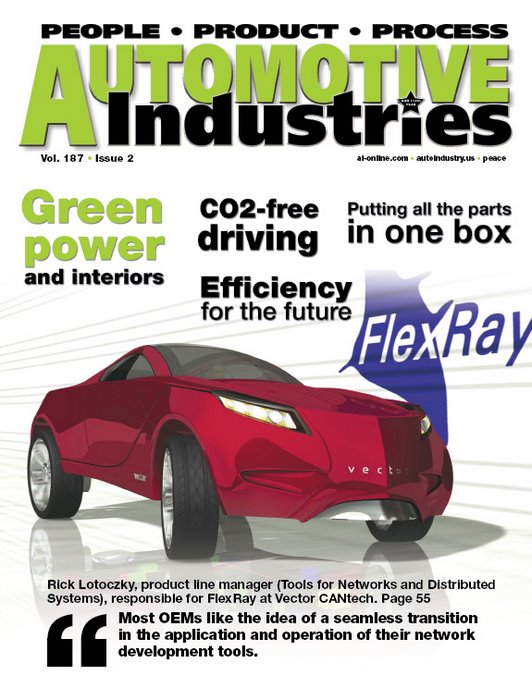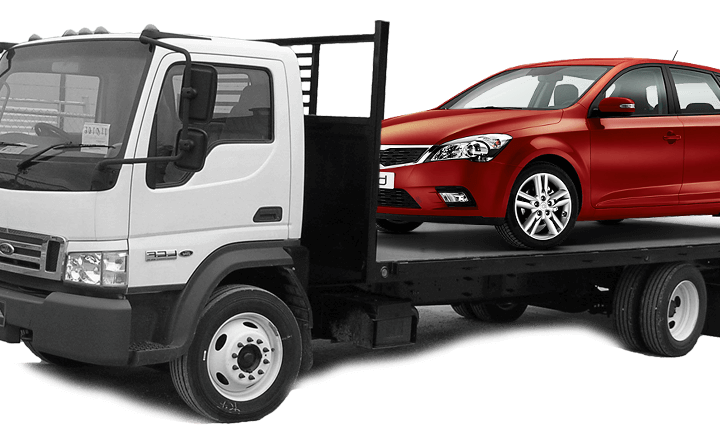
Vector Informatik is the leading producer of software tools and components for networking of electronic systems based on CAN, LIN, FlexRay and MOST as well as a number of CAN-based protocols.
Headquartered in Stuttgart, Germany, the company is a premium member of the FlexRay consortium, which it has been part of since 2000. Vector has subsidiaries in Japan, France, Sweden, Korea and the United States. Vector’s portfolio of FlexRay hardware and software tools is widely used throughout the automotive industry and supports the entire development cycle of FlexRay networks and ECUs – beginning with tools for the design of networks and communication databases and continuing with software for analysis, simulation, test and diagnostics of networks and ECUs.
Automotive Industries spoke to Rick Lotoczky, product line manager (Tools for Networks and Distributed Systems), responsible for FlexRay at Vector CANtech.
AI: How would you describe Vector’s role in the FlexRay consortium?
Lotoczky: Vector is a Premium Member in the FlexRay Consortium and also participates in working groups of the FlexRay Consortium.
AI: How have your FlexRay-enabled solutions and products fared among OEMs?
Lotoczky: Here in the US, we have been successful with our tools such as CANalyzer, for bus analysis and CANoe, for development and testing. We are the only company to offer an integrated solution for systems designed around multiple bus architectures such as CAN and FlexRay. Most OEMs like the idea of a seamless transition in the application and operation of their network development tools. This reduces the learning curve for their staff and maximizes the ROI achieved using Vector products.
AI: Please tell us a little about the FlexRay-based solutions/products Vector is working on.
Lotoczky: FlexRay support is so thoroughly integrated into our tools that even novice users can easily make the transition from one bus technology to another. In instances where this integration was impractical, we simply designed new tools. For example, the design of FlexRay network architectures and the associated data communication is done using DaVinci Network Designer FlexRay. This tool was specially created for the needs of FlexRay systems. Both CANalyzer and CANoe are standard tools used in the development of automotive communication networks. They were extended with some special features for FlexRay analysis, simulation and test. For example, CANoe RT (Real Time) was added to support hard, real-time situations such as those required for hardware-in-the-loop simulations of small to mid-size FlexRay systems. Another big advantage is that an engineer can use these familiar tools for analyzing, simulating and testing vehicle communication simultaneously on multiple bus technologies such as FlexRay, CAN and LIN. Such common practices are fully achievable with very little effort.
Vector’s calibration tool, CANape, was the first and is still the only tool which supports the XCP calibration protocol on FlexRay. Vectors’ diagnostics development tools (e.g. CANdito) also support a physical interface to FlexRay in addition to the standard interfaces to K-line and CAN.
Vector offers various hardware interfaces to access the FlexRay bus. These range from PCMCIA cards to PCI cards and USB interfaces. Last year, Vector introduced a combined CAN and FlexRay USB interface – the VN7600.
For physical layer testing, Vector offers the FRstress which is capable of manipulating FlexRay messages and can generate bit distortions within the data streams.
In addition to our development support products, we also offer embedded software modules for FlexRay that are available for various micro controllers. They consist of both a static and a dynamic part. The latter is generated as a function of user configuration settings. These modules are based on AUTOSAR, thus leveraging the work of the European automotive industry to simultaneously introduce FlexRay and AUTOSAR.













More Stories
Getac on AI’s transformative impact on automotive production and aftersales
New Infineon Bluetooth range designed to meet OEM needs
With the right people and portfolio, Celanese is ready for present and future EV developments